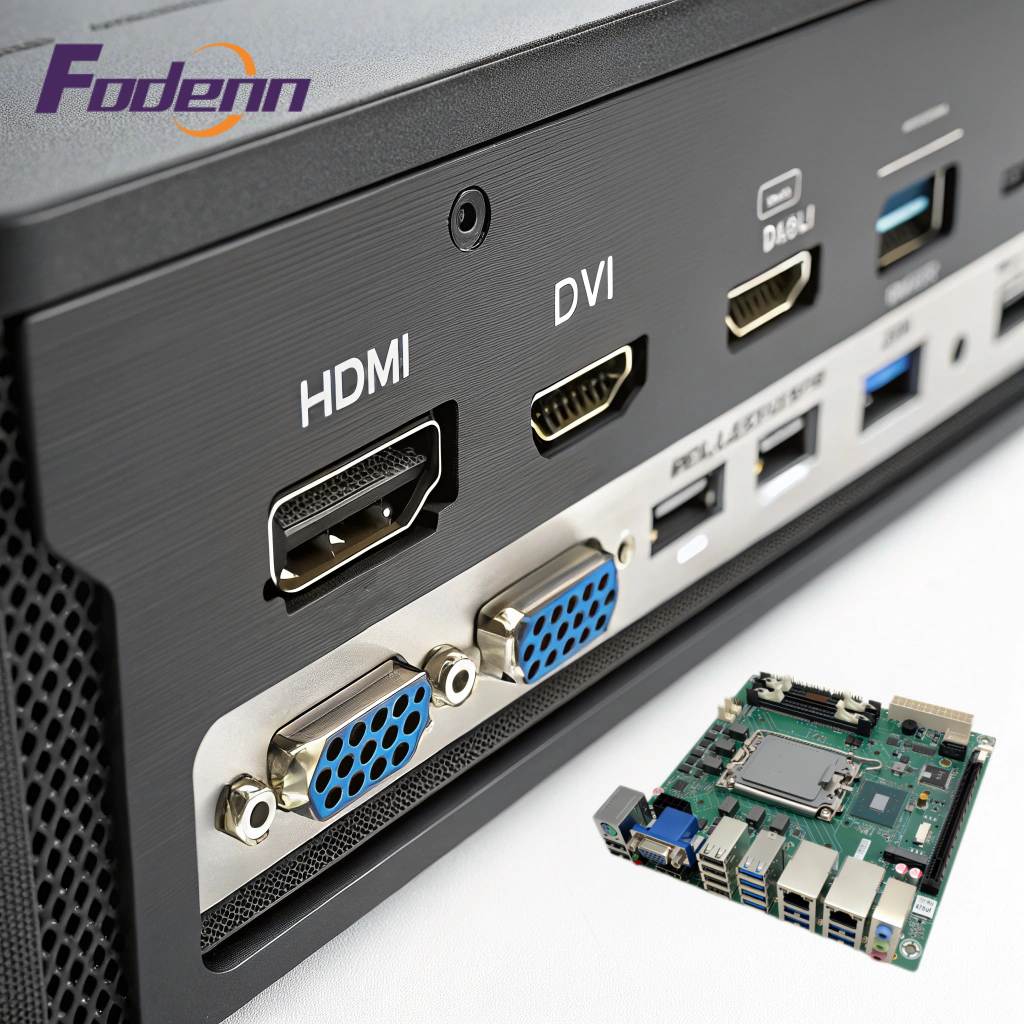What are the Essential Display Interfaces for Industrial Mini Computers?
Jan 13, 2025
Industrial All in One Computers are essential in various industrial applications, providing robust and reliable computing power. One of the key features that make IPCs versatile is their extensive range of display interfaces. These interfaces enable IPCs to connect with a wide array of displays and visualization systems, facilitating efficient data exchange and control. Selecting the appropriate display interface technology for industrial PCs requires careful consideration of specific application requirements and compatibility with other components to ensure seamless integration and optimal performance.
1. VGA (Video Graphics Array)
VGA is one of the most widely used display interfaces in industrial computers. It is an analog interface that supports a wide range of resolutions and is known for its reliability and compatibility with various display devices. VGA is particularly useful in environments where high-resolution displays are required, and it is often used in industrial control systems, monitoring stations, and other applications where visual clarity is crucial.
Features and Benefits:
- Wide Compatibility: VGA is supported by a vast array of monitors and display devices.
- High Resolution: Supports high-resolution displays, making it suitable for detailed visual tasks.
- Reliability: Known for its robust performance in industrial environments.
2. DVI (Digital Visual Interface)
DVI is a digital interface that supports high-resolution displays and is commonly used in industrial embedded PCs for applications requiring high-definition video output. DVI can be used in both single-link and dual-link configurations, with dual-link DVI supporting higher resolutions and refresh rates.
Features and Benefits:
- High Data Transfer Rates: Supports high-resolution displays with fast refresh rates.
- Digital Signal: Provides a clear and sharp image quality without analog signal degradation.
- Versatility: Can be used with a variety of display devices, including monitors, projectors, and digital signage.
3. HDMI (High-Definition Multimedia Interface)
HDMI is a digital interface that supports both high-definition video and audio signals. It is widely used in modern industrial displays and is ideal for applications that require multimedia capabilities, such as digital signage computers, control rooms, and multimedia presentations.
Features and Benefits of this HDMI Display Mini PCs:
- Multimedia Support: Transmits both video and audio signals over a single cable.
- High Definition: Supports high-definition video resolutions, ensuring clear and detailed images.
- Wide Adoption: Widely supported by modern display devices and multimedia systems.
4. DisplayPort (DP)
DisplayPort is a high-performance digital interface that supports very high resolutions and refresh rates. It is ideal for professional and high-end display applications, such as medical imaging, high-resolution industrial monitoring Computer, and advanced visualization systems.
Features and Benefits:
- High Data Transfer Rates: Supports ultra-high resolutions and fast refresh rates.
- Multiple Display Support: Can drive multiple displays from a single interface, reducing the need for additional ports.
- Adaptability: Supports a wide range of display technologies and resolutions.
5. LVDS (Low-Voltage Differential Signaling)
LVDS is a common choice for large LCDs and peripherals that require high bandwidth, such as high-definition graphics and fast frame rates. It is widely used in industrial PCs due to its high data transfer speed and low voltage, making it an excellent solution for industrial applications.
Features and Benefits:
- High Data Transfer Speed: Supports high-resolution displays with fast refresh rates.
- Low Voltage: Reduces power consumption and electromagnetic interference.
- Reliability: Known for its robust performance in industrial environments.
6. MIPI Display Serial Interface (DSI)
MIPI DSI is a high-speed differential protocol specifically designed for display communication. It is widely used in smartphones and is becoming increasingly popular in industrial PCs. MIPI DSI is ideal for applications that require low-power, high-resolution displays.
Features and Benefits:
- Low Power Consumption: Designed for low-power displays, making it suitable for battery-powered devices.
- High Data Transfer Rates: Supports high-resolution displays and fast refresh rates.
- Versatility: Can handle a large amount of data, supporting rich color rendering and video transmission.
7. eDP (Embedded DisplayPort)
eDP is a digital display interface developed by VESA for use in embedded systems, notebooks, and laptops. It is designed to provide high-speed, low-power eDP industrial motherboard, and cost-effective display solutions. eDP is ideal for embedded systems and mobile devices that require high-quality display performance.
Features and Benefits:
- High Data Transfer Rates: Supports up to 8.64 Gbit/s with four data pairs.
- Low Power Consumption: Uses low voltage differential signaling (LVDS) protocol, reducing power usage and electromagnetic interference.
- Multiple Display Support: Can drive multiple displays from a single interface, reducing the need for additional ports.
8. RGB (Red Green Blue)
RGB is used to interface with large color displays. It sends 8 bits of data for each of the three colors (Red, Green, and Blue) every clock cycle, supporting high-resolution displays at video frame rates of 60Hz and up.
Features and Benefits:
- High Performance: Supports high-resolution displays with fast refresh rates.
- Low Cost: Mature technology makes it cost-effective.
- Wide Bandwidth: Capabilities up to 1.2 GB/sec, suitable for medium to large displays.
Choosing the right display interface technology is crucial for industrial PCs to ensure high-quality display performance and efficient functionality. MIPI, eDP, and LVDS are popular LCD interfaces for display that have unique features and benefits. It is important to consider factors such as display resolution, bandwidth, power consumption, cost, and compatibility with the chipset of the LCD interface when choosing between these technologies. Checking compatibility is especially important when reusing a design for products in different sizes. Contact Fodenn professional technicians to get the most cost-effective display PC solution.
Read More
